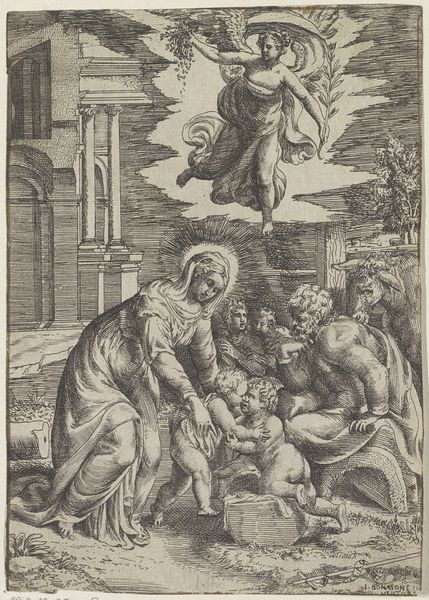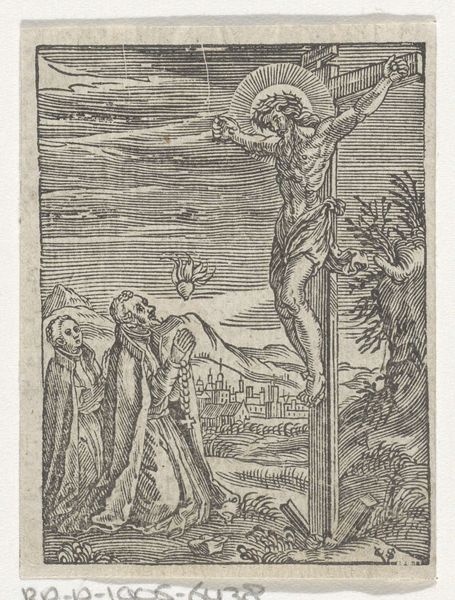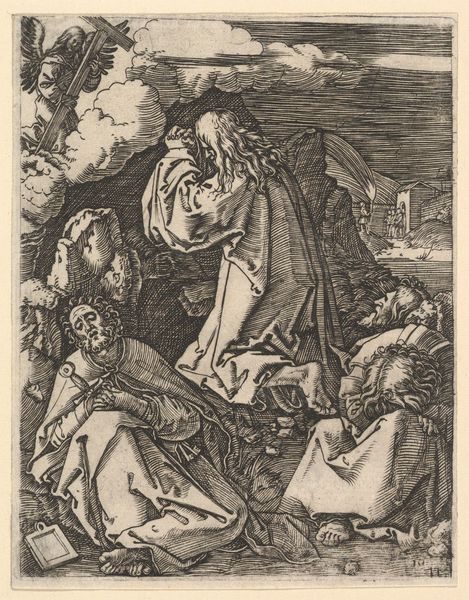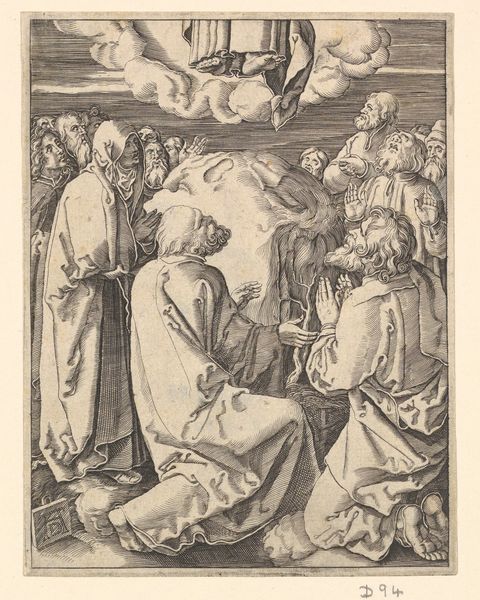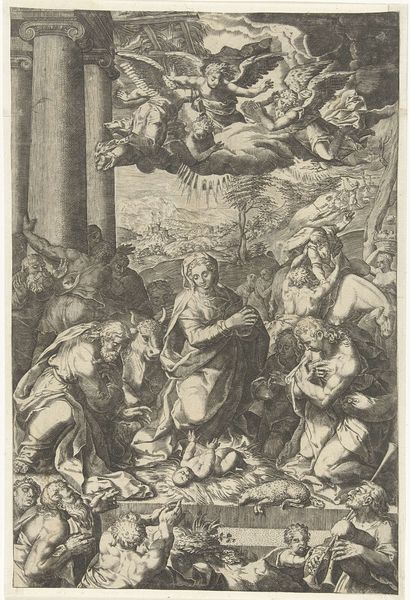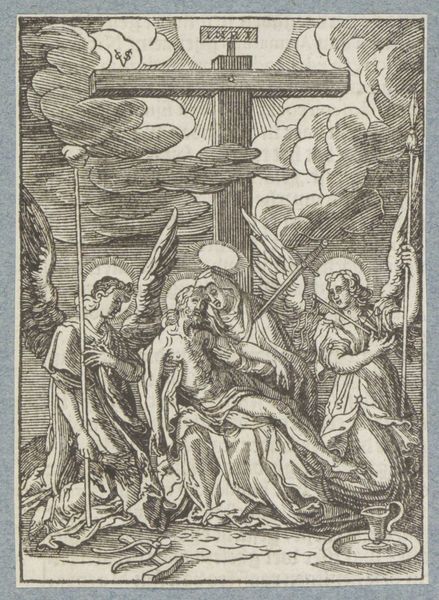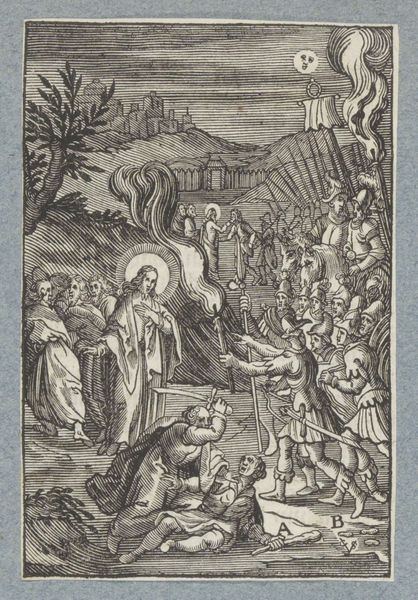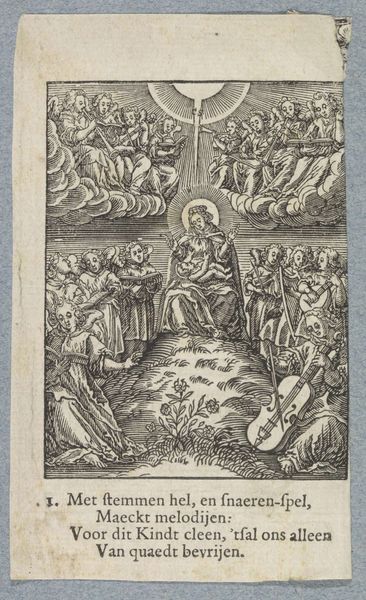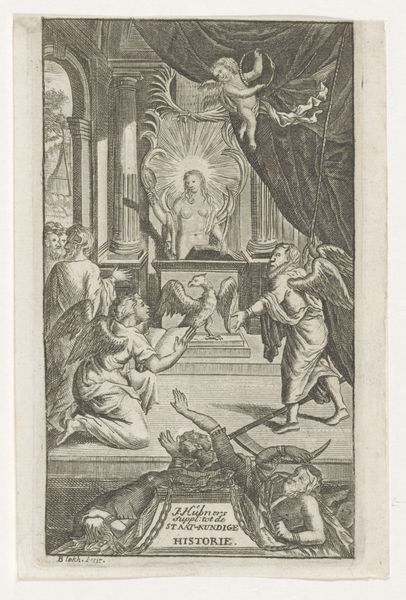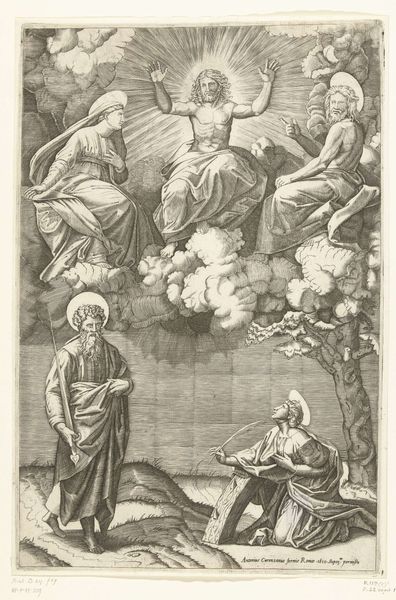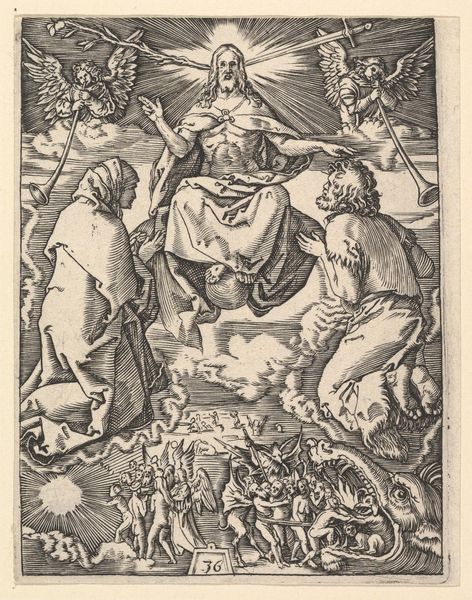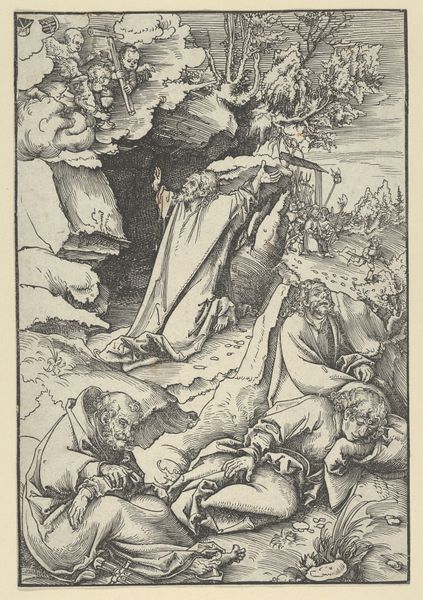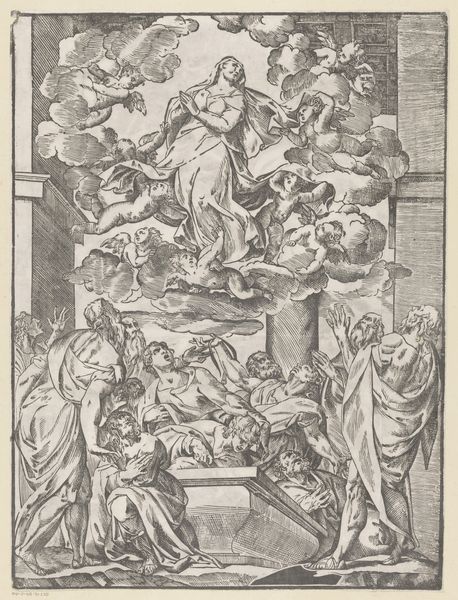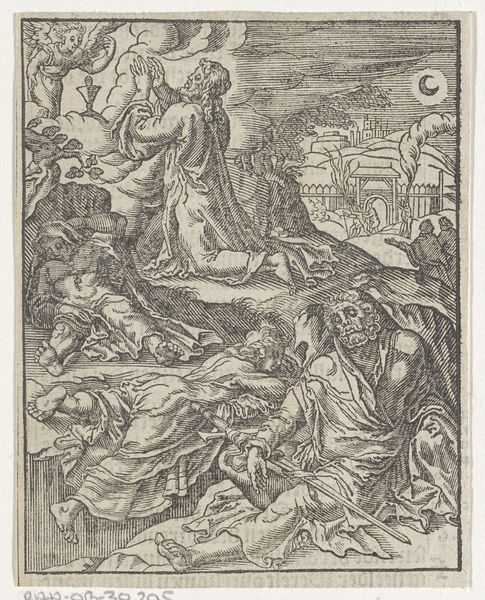
print, engraving
#
baroque
# print
#
figuration
#
line
#
history-painting
#
engraving
Dimensions: height 89 mm, width 54 mm
Copyright: Rijks Museum: Open Domain
This print, "Afdaling in het Voorgeborchte," was made around the early 17th century by Philippe van Mallery. It is an engraving, meaning that the image was incised into a metal plate, probably copper, with a tool called a burin. Ink was then applied to the plate and wiped away, remaining only in the etched lines. Finally, the image was transferred to paper under high pressure. Look closely, and you can see the qualities of line that define the image. Notice the intricate detail in the depiction of Christ, the tormented souls, and the devils lurking in the background. The controlled, precise marks of the burin create a sense of depth and drama, characteristic of the Baroque style. Engraving was a highly skilled and laborious process. Mallery wasn’t only an artist but also a technician, who had mastered the use of specialized tools. This print wasn't just a piece of art; it was a product of skilled labor, made for a market hungry for religious imagery. Understanding the process and materials of this engraving allows us to appreciate not only its aesthetic qualities but also its historical and social context.
Comments
No comments
Be the first to comment and join the conversation on the ultimate creative platform.
